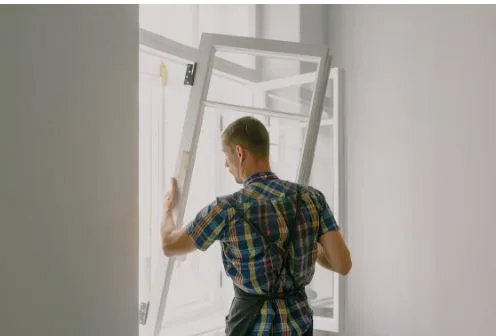Mr. Garage Door Repairman: A Homeowner’s Briefing on Quieter, Safer, Newsworthy Garage Doors
If you have ever left for work only to hear your garage door grind, hesitate, and roll back up, you know how fast a small malfunction can create a big delay. For readers of Big News Network who value practical guidance with a current, service-industry lens, this briefing explains what matters now in garage door safety, reliability, and smart upgrades. It draws on field insights from Mr. Garage Door Repairman, a Brooklyn team known for pairing clean workmanship with tech-forward solutions.
Why your garage door deserves headline attention
A garage door is the largest moving system in most homes. It affects security, curb appeal, and even utility costs. Today’s models are far more than panels on tracks. Quiet belt drives, battery backup, encrypted remotes, and Wi-Fi apps have become standard features that make daily routines smoother and safer. When the system is tuned correctly, you get a near-silent open, a firm seal against drafts, and confidence that the door will operate during outages.
Fast maintenance habits that prevent most surprises
A short seasonal routine keeps hardware within spec and prevents noisy, energy-wasting operation.
- Wipe tracks and roller stems with a dry microfiber cloth to remove grit.
- Apply a light silicone spray to rollers, hinge pins, and spring bearings. Avoid heavy grease that attracts dust.
- Tighten visible lag bolts at track brackets and opener mounts. Temperature swings gradually loosen fasteners.
- Test photo-eye sensors monthly by placing a cardboard box under the closing door. The door should reverse immediately.
- Disengage the opener and lift the door by hand to mid height. If it drifts or slams shut, balance is off and a professional should adjust spring torque.
These steps take under 20 minutes and extend service life for motors, cables, and rollers.
Read the signals before a breakdown
Most failures announce themselves. A metallic squeal at mid travel often points to a failing roller bearing. A thump at startup can mean loose track fasteners or a worn opener gear. Random reversals usually trace to dirty or misaligned sensors. Address these early, and you avoid collateral damage to panels and hardware.
Safety first – and where DIY stops
Garage doors combine heavy panels and high torsion. Homeowners can safely clean, lubricate, and tighten fasteners, but winding torsion springs or replacing cables is not a DIY job. If the door feels heavy by hand, sits crooked, or shows frayed cable strands, stop and schedule a technician. Correct tools and procedures prevent injuries and protect vehicles and finished floors.
Design, comfort, and energy considerations
A well-specified door upgrades both appearance and comfort. Insulated sandwich panels with polyurethane cores reduce street noise and stabilize temperature in spaces used for workouts or storage. Composite or aluminum skins hold finishes better than bare steel in humid or coastal environments. Perimeter seals with low-profile lips improve the facade and block dust and pests. Inside the garage, integrated LED lighting on the opener provides even light without adding fixtures.
Smart features that actually matter
Modern openers deliver real-world benefits. Battery backup keeps access reliable during blackouts. Soft-start motors reduce vibration that transfers to bedrooms above the garage. Rolling-code encryption thwarts signal grabbers. Wi-Fi control sends status alerts so you can close an open door from across town. Optional cameras provide verified deliveries without additional gadgets on the header.
Repair or replace – a clear framework
Ask three questions before spending: How old is the opener and does it have current safety sensors and quiet drive technology. How often are you calling for service. Does the door undermine comfort with drafts and noise. If the answers point to outdated equipment, frequent repairs, and poor comfort, a planned upgrade usually wins on cost and reliability over the next three to five years.
For readers seeking a reliable local pro after running this checklist, many turn to a seasoned garage door repairman for diagnostics, transparent pricing, and a clear path to safe operation.
If you are comparing replacement openers and want an unbiased overview of what’s performing well right now, this feature on Top 5 Garage Door Opener Brands for Replacement summarizes strengths, quiet ratings, and must-have features to look for in your next unit.
Installation quality makes or breaks performance
Even premium doors disappoint if they are installed without precise alignment. Expect your installer to verify framing plumb and level, set spring torque so the door holds at mid travel, align the rail dead center, and document force-limit and safety-sensor tests. A clean, well-documented handoff prevents callbacks and keeps the system quiet for years.
A 12-month plan you can keep
Add two reminders to your calendar: early spring and early fall. Clean and lubricate, tighten hardware, test sensors and safety reversal, and book a professional inspection if the door feels heavy or noisy. This small habit turns a potential headache into a dependable, quiet utility that supports the rest of your day.
Mr. Garage Door Repairman
Brooklyn, NY 11223
718-300-4032
mrgaragedoorrepairman.com





